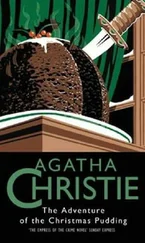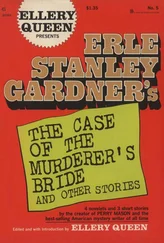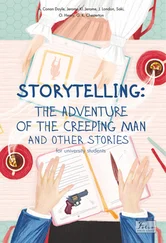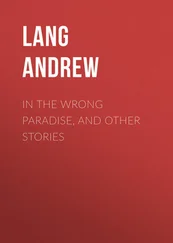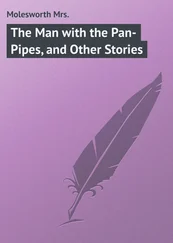He could not produce the fireworks publicly because it was of course against the law. He nevertheless continued to turn them out and apparently became fairly well off. It seems that he regularly donated money for the construction of the town roads and made sizeable monetary contributions to the neighborhood functions with donations that appreciably exceeded what was expected. Once — Onoe didn't know when it was — a policeman came around and hauled Hosen off to the police station in a neighboring town, but somehow he was acquitted and did not have to pay a fine. Even after that, Hosen continued to make his living the same way as before, still in his dark and gloomy workshop.
At any rate, the fact is that before he died in 1940, Hosen spent almost ten years of his lonely life in this hamlet. For about the last three years, however, because he had made a small fortune, the villagers rarely saw him produce fireworks. Usually, he was just on the porch, sometimes just sitting there, sometimes sleeping, mostly just doing nothing but gazing abstractedly ahead. Still, in the summer, when he was asked to do so by the neighborhood youths, he would make a few fireworks and accept the small gratuities they offered him. Moreover, if he was badgered into it, he would wrap up some of the fireworks he had made and go himself to shoot them off in the neighboring villages at the summer festivals. As a result, it appears that he was regarded more affectionately as "Uncle Hosen" by the people in other villages than by those in this one.
Hosen's death came suddenly. Early one morning when the autumn rain had been pouring down continuously, his next door neighbor, who actually lived a full block away, became curious about the fact that "Uncle Hosen" had not shown up for two or three days, so he went over to visit him. Hosen was lying on his face in the
doma,
dead. When the neighbor tried touching him, it was obvious from the rigidity and coldness of the dead body that many hours had passed since his death. The cause of Hosen Hara's death was apoplexy.
An interesting thing in connection with Hosen's passing away was that just prior to his death he apparently had been intending to work with his paintbrushes. This could be deduced from the fact that in the storeroom there was a blanket, folded in two, on top of which a number of dishes for mixing paint had been arranged in order. Beside them, five paintbrushes had been placed with their necks neatly lined up on the cover of an inkstone case. Right in the middle of the blanket, a sheet of brand new white paper on which nothing had been painted was spread out just as neatly. It was thought that he had been just intending to take up his brush when he remembered something he had to attend to, had stepped down into the
doma
, and had passed away there just like that.
"Was Hosen-san painting pictures in his later years?" I asked Senzo Onoe.
"I don't think he was painting any more. But he was a painter at heart, so I guess it must have been on his mind, even when he had a hunch that he was going to die. Some people might say that he was going to paint, but he was missing three fingers, so it wouldn't have been easy to paint anything worth mentioning," he replied.
That was the last of the counterfeiter, but there was something in that story that struck me. Onoe had said that drawing paper without a single brush stroke on it had been spread out and ready, but I had the feeling that he really had no intention of painting a picture at that time. I felt rather that he only wanted to surround himself with his painting gear.
I listened to this tale of Hosen Hara to the end, and when I got up to leave, Senzo Onoe said, as though he had suddenly remembered something, "By the way, inside a cabinet in the storeroom of your house there are some things Uncle Hosen wrote. I think there's something he wrote about fireworks. Those things were found at the time of his funeral, and some of the young boys must have thought they might be of use some day and stored them in the Assembly Hall."
There was one cabinet in the storeroom of the house I had rented which we had not touched and had left alone as promised when I had leased the house. I didn't know what was in it but had guessed that it must contain things that were owned jointly by the young people of the village.
On returning home, I opened that cabinet. An account book of festival receipts, minutes of a youth conference, drafts of speeches — trash of that sort was crammed into it. In among these things, I discovered a notebook of bound Japanese rice-paper with the words
Outline of Procedures Governing the Manufacture of Pyrotechnics
skillfully written, by brush of course, on the cover. The title was pretentious, but these things appeared to be something like memoranda which Hosen Hara had written himself on the making of fireworks. When I opened up the notebook and looked at a page, there was a heading, "Fog Blooms; Red Fog; Snowfall," with this formula underneath:
"In order to make stars, prepare a saffron core and set it aside to dry; then add clay to chrysanthemum powder,
*
mix with water, add 1 1/2 % magnesium, and stir in a mortar; wrap the resulting paste around the core in layers; after the core is well covered with the paste, sprinkle with a mixture made from 15 OZ. of chrysanthemum and oz. of seed.
**
Roll the ball well and repeat this process several times. When it gets to be four or five inches, add a booster. Be sure to dry the ball in the sun after each application. Cores of 5 3/4 inches and 7 1/2 inches can be used."
Very unclear passages like this covered three pages. Then followed paragraphs on combinations of saffron and combinations of chrysanthemum. Proportions for each kind of explosive were written by brush in red. Then followed sections on the manufacture of "Roman Candles," "Floral Cores," "Firetails," etc. Of course these were Hosen's memoranda to himself, but to me, who had absolutely no knowledge of fireworks, they were completely incomprehensible. There was a sheet of Japanese rice-paper stuffed between one set of interleaves. I opened it and looked at it. It was Hosen's own
curriculum vitae,
a personal statement of interest to me for very special reasons.
"Born: October 3, 1874; Senjiro (pen-name: Hosen) Hara,"
was written at the beginning, so there was no question that this was Hosen's own
curriculum vitae.
However, his record of employment, which can only be regarded as fictitious, was listed simply in this sketchy fashion:
"1916, Arareya Fireworks Store, Tokyo
1918, Suzuki Fireworks Store, Yokosuka
1921, In Charge of the Oriental Pyrotechnical Factory
1922, Sakai Fireworks Display Store, Osaka
1924, In Charge of the Marudama Pyrotechnics Factory, Osaka"
At the end, there was an ostentatious subscript: "
The foregoing is certified as factual."
It is not clear where, when, or to whom he intended to submit this. This much, however, is clear: the period from 1912 to 1926 was precisely the time he was dispensing Keigaku forgeries as he moved around in the small cities and towns of Hyogo and Okayama Prefectures. It is therefore also clear that this was a wholly fabricated statement of his personal history. The possibility exists that when Hosen reached an impasse trying to earn a living as a counterfeiter or as a village artist, he might have been a technician in charge of a fireworks factory at one or another country town — on the side. If you want to stretch your imagination even further, you could even say that when he was ordered to appear at the police station, he was possibly able to settle the matter very quickly by just producing this false document and wrapping the police up in smoke. In any case, there is no doubt that this document clearly reveals a characteristic part of the nature of the person that was Hosen Hara.
Читать дальше

